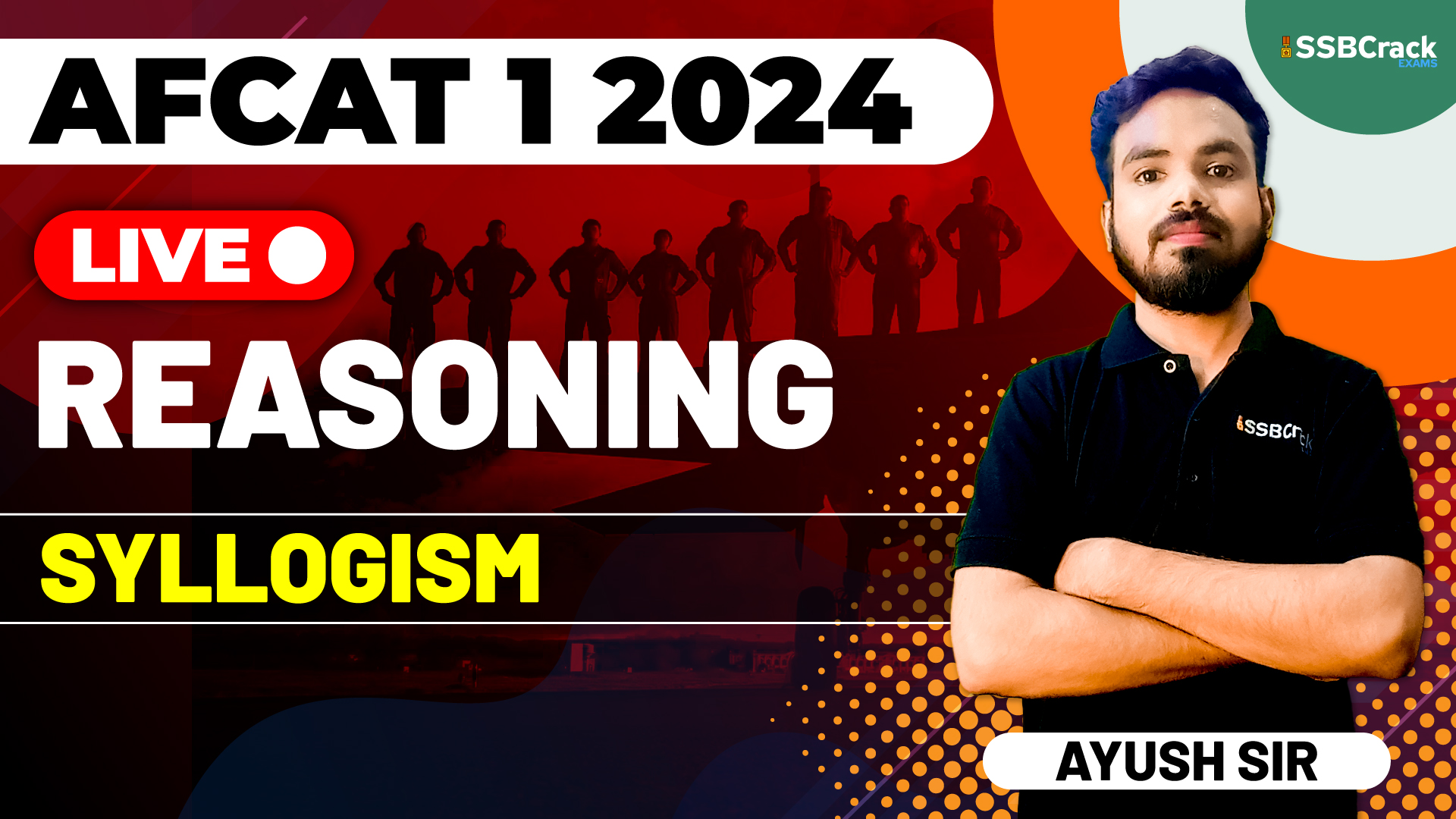As the AFCAT (Air Force Common Admission Test) and CDS (Combined Defence Services) exams for 2024 draw near, candidates are immersed in comprehensive preparations, particularly in the reasoning section. One of the intriguing topics within reasoning is Syllogism—an area that demands logical thinking and deduction. In this live class dedicated to Syllogism, important and previous year questions were discussed and solved with fundamental concepts and tricks. This article delves into the nuances of AFCAT-CDS 1 2024 Exam Reasoning – Syllogism Class, shedding light on key insights and strategies for effective problem-solving.
Understanding Syllogism
Essential Concepts of Syllogism
1. Basic Elements
- A syllogism typically consists of two premises and a conclusion. Understanding the structure is crucial.
2. Categorical Statements
- Statements categorize elements into groups. Recognizing the categories helps in drawing logical conclusions.
3. Universal and Particular Statements
- Differentiating between universal (all, no) and particular (some) statements is key to accurate deductions.
4. Valid and Invalid Syllogisms
- Recognizing the criteria for validity ensures sound reasoning. Identifying common fallacies helps in identifying invalid syllogisms.
Solving Previous Year’s Important Questions
Question 1: Identifying Valid Conclusions
- All birds are animals. Some animals can fly. Therefore, some birds can fly.
- Trick: Analyze the premises to determine the validity of the conclusion. Verify whether the conclusion logically follows from the given statements.
- Solution: The conclusion is valid since it logically follows from the given statements.
- Explanation: In this case, the conclusion aligns with the premises, as it’s established that birds are a subset of animals, and some animals can fly.
Question 2: Recognizing Invalid Conclusions
- Some dogs are mammals. No mammals can fly. Therefore, some dogs can’t fly.
- Trick: Scrutinize the premises and conclusion to identify any logical fallacies. Determine whether the conclusion contradicts the given statements.
- Solution: The conclusion is invalid as it contradicts the premises. The fact that some dogs are mammals doesn’t imply they can’t fly.
- Explanation: This question highlights the importance of avoiding assumptions that aren’t supported by the given statements.
Question 3: Differentiating Between Universal and Particular Statements
- All fruits are healthy. Some desserts are not healthy. Therefore, some fruits are not desserts.
- Trick: Differentiate between universal and particular statements. Understand the logical relationship between the categories mentioned.
- Solution: The conclusion is valid as it aligns with the logical relationship established in the premises.
- Explanation: The conclusion logically follows, given that fruits are categorized as healthy, and some desserts are not healthy.
Tricks for Efficient Syllogism Problem Solving
1. Diagrammatic Representation
- Trick: Use diagrams to visually represent categorical statements. This aids in a clearer understanding of relationships between categories.
- Application: Drawing circles or Venn diagrams helps visualize the overlap or separation of categories, facilitating efficient deductions.
2. Identifying Key Words
- Trick: Recognize key words like ‘all,’ ‘no,’ ‘some,’ and their variations. These words provide crucial information about the relationships between categories.
- Application: Understanding the quantifiers in statements is essential for drawing accurate conclusions.
3. Analyzing Contradictions
- Trick: Scrutinize conclusions for any contradictions with the given premises. Identify statements that directly oppose each other.
- Application: Avoid drawing conclusions that directly contradict established relationships in the premises.
4. Validating Valid Conclusions
- Trick: Validate conclusions by ensuring they logically follow from the given statements. Confirm that there are no assumptions beyond what is stated.
- Application: Thoroughly analyze the logical flow from premises to conclusion, ensuring a seamless transition.
Analyzing Extra Complex Syllogism Questions
Question 4: Multiple Statements
- All scholars are knowledgeable. Some knowledgeable people are wise. Therefore, some scholars are wise.
- Trick: Break down multiple statements into individual components. Evaluate the relationships between each pair of categories.
- Solution: The conclusion is valid, as it logically follows from the given statements.
- Explanation: This question emphasizes the importance of breaking down complex syllogisms into manageable parts for accurate analysis.
Question 5: Negative Statements
- No reptiles are mammals. Some mammals are pets. Therefore, some pets are not reptiles.
- Trick: Pay close attention to negative statements, as they have distinct implications for the relationships between categories.
- Solution: The conclusion is valid, as it aligns with the established relationships in the premises.
- Explanation: Negative statements introduce specific restrictions, and recognizing these is crucial for accurate deductions.
Strategies for Effective Syllogism Problem-Solving
1. Identify the Type of Statement
- Strategy: Quickly identify whether a statement is universal, particular, affirmative, or negative. This categorization streamlines the analysis.
2. Recognize Relationships
- Strategy: Clearly understand the relationships between categories in the premises. This serves as the foundation for accurate conclusions.
3. Use Visual Aids
- Strategy: Employ visual aids like diagrams to represent relationships between categories. Visualization enhances understanding.
4. Break Down Complex Syllogisms
- Strategy: When faced with complex syllogisms, break them down into simpler components. Analyze each part individually before combining them.
5. Practice Regularly
- Strategy: Regular practice is essential for honing syllogism-solving skills. Exposure to a variety of problems enhances proficiency.
Conclusion
In conclusion, AFCAT-CDS 1 2024 Exam Reasoning – Syllogism Class provided valuable insights into the intricate world of syllogistic reasoning. The ability to draw logical conclusions from categorical statements is a crucial skill for success in the Reasoning section of competitive exams. By mastering fundamental concepts, applying efficient tricks, and adopting strategic problem-solving approaches, candidates can confidently approach syllogism questions. Regular practice, exposure to diverse problems, and a systematic approach will undoubtedly contribute to success in tackling the complexities of syllogistic reasoning. Best of luck in your preparation for the AFCAT-CDS 1 2024 Exam and your journey towards a fulfilling career in defense services!



















